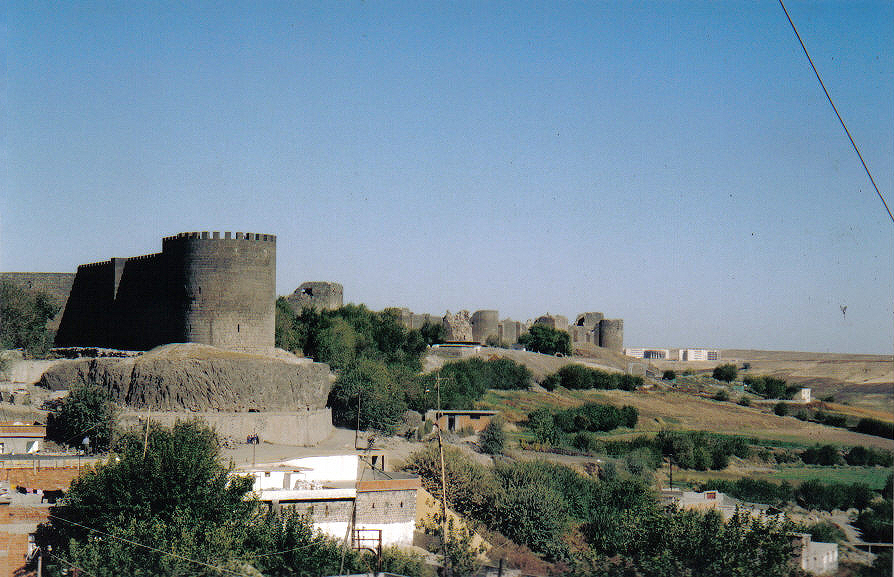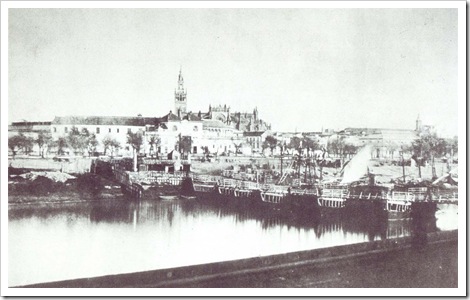|
Barbatio
Barbatio (died AD 359) was a Roman general of the infantry ( Magister Peditum = Master of Foot) under the command of Constantius II. Previously he was a commander of the household troops (''protectores domestici'') under Gallus Caesar, but he arrested Gallus under the instruction of Constantius, thereby ensuring his promotion on the death of Claudius Silvanus. In 359, both he and his wife Assyria were arrested and beheaded for treason against Constantius, possibly as part of a plot by Arbitio, a senior cavalry commander (Magister Equitum = Master of Horse), and another exponent of the forms of scheming and political intrigue that became such a part of the later Roman Empire. Fall of Gallus Barbatio, a soldier of unknown origin, began his rise when he was appointed to command the household troops of Caesar Gallus, a cousin of Constantius II. When Gallus fell out of favor with the emperor, it was Barbatio who arrested him and stripped him of his imperial attire. The Caesar was ta ... [...More Info...] [...Related Items...] OR: [Wikipedia] [Google] [Baidu] |
Battle Of Strasbourg
The Battle of Strasbourg, also known as the Battle of Argentoratum, was fought in 357 between the Western Roman army under Julian and the Alamanni tribal confederation led by the joint paramount King Chnodomar. The battle took place near Strasbourg, called Argentoratum in Ammianus Marcellinus' account, ''Argentorate'' in the Tabula Peutingeriana (section 2). Although possibly outnumbered, the Roman army won a decisive victory after a hard-fought struggle with the Alamanni. With negligible casualties of their own, the Romans drove the Alamanni beyond the river, inflicting heavy losses. The Roman force, the imperial escort army of Julian, was small but of high quality. The battle was won by the skill of the Roman infantry, with the Roman cavalry initially performing poorly. The battle was the climax of Julian's campaigns in 355–57 to evict barbarian marauders from Gaul and to restore the Roman defensive line of fortifications along the Rhine, which had been largely destroyed ... [...More Info...] [...Related Items...] OR: [Wikipedia] [Google] [Baidu] |
Julian (emperor)
Julian (; ; 331 – 26 June 363) was the Caesar (title), Caesar of the West from 355 to 360 and Roman emperor from 361 to 363, as well as a notable philosopher and author in Ancient Greek, Greek. His rejection of Christianity, and his promotion of Neoplatonic Hellenistic religion, Hellenism in its place, caused him to be remembered as Julian the Apostate in the Christian tradition. A nephew of Constantine the Great, Julian was one of few in the imperial family to survive the purges and civil wars during the reign of Constantius II, his cousin. Julian became an orphan as a child after his father was executed in 337, and spent much of his life under Constantius's close supervision. However, the emperor allowed Julian freedom to pursue an education in the Greek-speaking east. In 355, Constantius II summoned Julian to court and appointed him to rule Roman Gaul, Gaul. Julian was successful in his rule, defeating and counterattacking Germanic peoples, Germanic raids across the Rhine ... [...More Info...] [...Related Items...] OR: [Wikipedia] [Google] [Baidu] |
Constantius II
Constantius II (; ; 7 August 317 – 3 November 361) was Roman emperor from 337 to 361. His reign saw constant warfare on the borders against the Sasanian Empire and Germanic peoples, while internally the Roman Empire went through repeated civil wars, court intrigues, and usurpations. His religious policies inflamed domestic conflicts that would continue after his death. Constantius was a son of Constantine the Great, who elevated him to the imperial rank of '' Caesar'' on 8 November 324 and after whose death Constantius became ''Augustus'' together with his brothers, Constantine II and Constans on 9 September 337. He promptly oversaw the massacre of his father-in-law, an uncle, and several cousins, consolidating his hold on power. The brothers divided the empire among themselves, with Constantius receiving Greece, Thrace, the Asian provinces, and Egypt in the east. For the following decade a costly and inconclusive war against Persia took most of Constantius's time and at ... [...More Info...] [...Related Items...] OR: [Wikipedia] [Google] [Baidu] |
Gallus Caesar
Flavius Claudius Constantius Gallus (326 – 354) was a statesman and ruler in the eastern provinces of the Roman Empire from 351 to 354, as ''Caesar'' under emperor Constantius II (), his cousin. A grandson of emperor Constantius Chlorus () and empress Flavia Maximiana Theodora, and a son of Julius Constantius and Galla, he belonged to the Constantinian dynasty. Born during the reign of his uncle Constantine the Great (), he was among the few male members of the imperial family to survive the purge that followed Constantine's death. Under Constantius II, Gallus served as deputy emperor, based in Antioch and married to Constantius' sister Constantina. He dealt with a Jewish revolt in the years 351-352. Gallus ultimately fell out of favor with Constantius and was executed, being replaced as ''Caesar'' by his younger half-brother Julian. Family Gallus was a son of Julius Constantius and his first wife Galla, who seems to have died at some point prior to 331/2. Gallus' patern ... [...More Info...] [...Related Items...] OR: [Wikipedia] [Google] [Baidu] |
Arbitio
Flavius Arbitio (fl. 354–366 AD) was a Roman general and Consul who lived in the middle of the 4th century AD. In the reign of Constantius II Arbitio was a general of Constantine I. Under Constantius II, the son and successor of Constantine, he became magister equitum (commander of the cavalry). Arbitio was a well trusted courtier of Constantius, and some modern historians have suggested he was his military strongman. In 355 he was made consul together with Quintus Flavius Maesius Egnatius Lollianus. Arbitio intrigued against Claudius Silvanus, Ursicinus and Barbatio and played a role in their downfalls. Historian Ammianus Marcellinus says he was "keen and eager in plotting treachery", and describes him as "fickle flatterer" to Constantius II. In the reign of Julian After the death of Constantius in 361, Arbitio was appointed chairman of the Chalcedon tribunal by the new Emperor Julian. In this function he was responsible for the conviction of Paulus Catena and man ... [...More Info...] [...Related Items...] OR: [Wikipedia] [Google] [Baidu] |
359 Deaths
__NOTOC__ Year 359 ( CCCLIX) was a common year starting on Friday of the Julian calendar. At the time, it was known as the Year of the Consulship of Eusebius and Hypatius (or, less frequently, year 1112 ''Ab urbe condita''). The denomination 359 for this year has been used since the early medieval period, when the Anno Domini calendar era became the prevalent method in Europe for naming years. Events By place Roman Empire * King Shapur II the Great of the Persian Empire invades southern Armenia. The Romans implement a scorched earth policy and place strong guards at the Euphrates crossings. * Siege of Amida: Shapur II besieges the Roman fortress of Amida (modern Diyarbakir). After seventy-three days the city is conquered and the population is massacred by the Persians. Ammianus Marcellinus is a fortunate survivor and flees to Singara (Iraq). * The first known Prefect of the city of Constantinople, Honoratus, takes office. * Famine in Upper Rhineland: A fleet of 80 ... [...More Info...] [...Related Items...] OR: [Wikipedia] [Google] [Baidu] |
Ancient Rome
In modern historiography, ancient Rome is the Roman people, Roman civilisation from the founding of Rome, founding of the Italian city of Rome in the 8th century BC to the Fall of the Western Roman Empire, collapse of the Western Roman Empire in the 5th century AD. It encompasses the Roman Kingdom (753–509 BC), the Roman Republic (50927 BC), and the Roman Empire (27 BC476 AD) until the fall of the western empire. Ancient Rome began as an Italic peoples, Italic settlement, traditionally dated to 753 BC, beside the River Tiber in the Italian peninsula. The settlement grew into the city and polity of Rome, and came to control its neighbours through a combination of treaties and military strength. It eventually controlled the Italian Peninsula, assimilating the Greece, Greek culture of southern Italy (Magna Graecia) and the Etruscans, Etruscan culture, and then became the dominant power in the Mediterranean region and parts of Europe. At its hei ... [...More Info...] [...Related Items...] OR: [Wikipedia] [Google] [Baidu] |
Pontoon Bridge
A pontoon bridge (or ponton bridge), also known as a floating bridge, is a bridge that uses float (nautical), floats or shallow-draft (hull), draft boats to support a continuous deck for pedestrian and vehicle travel. The buoyancy of the supports limits the maximum load that they can carry. Most pontoon bridges are temporary and used in wartime and civil emergencies. There are permanent pontoon bridges in civilian use that can carry highway traffic; generally, the relatively high potential for collapse and sinking (e.g. due to waves and collisions) and high continuous maintenance costs makes pontoons unattractive for most civilian construction. Permanent floating bridges are useful for sheltered water crossings if it is not considered economically feasible to suspend a bridge from anchored Pier (architecture), piers (such as in deep water). Such bridges can require a section that is elevated or can be raised or removed to allow waterborne traffic to pass. Notable permanent pontoo ... [...More Info...] [...Related Items...] OR: [Wikipedia] [Google] [Baidu] |
Pincer Movement
The pincer movement, or double envelopment, is a maneuver warfare, military maneuver in which forces simultaneously attack both flanking maneuver, flanks (sides) of an enemy Military organization, formation. This classic maneuver has been important throughout the history of warfare. The pincer movement typically occurs when opposing forces advance towards the center of an army that responds by moving its outside forces to the enemy's flanks to surround it. At the same time, a second layer of pincers may attack the more distant flanks to keep reinforcements from the target units. Description A full pincer movement leads to the attacking army facing the enemy in front, on both flanks, and in the rear. If attacking pincers link up in the enemy's rear, the enemy is encirclement, encircled. Such battles often end in surrender or destruction of the enemy force, but the encircled force can try to breakout (military), break out. They can attack the encirclement from the inside to ... [...More Info...] [...Related Items...] OR: [Wikipedia] [Google] [Baidu] |
Edward Gibbon
Edward Gibbon (; 8 May 173716 January 1794) was an English essayist, historian, and politician. His most important work, ''The History of the Decline and Fall of the Roman Empire'', published in six volumes between 1776 and 1789, is known for the quality and irony of its prose, its use of primary sources, and its polemical Criticism of religion, criticism of organized religion. Early life: 1737–1752 Edward Gibbon was born in 1737, the son of Edward Gibbon (died 1770), Edward and Judith Gibbon, at Lime Grove in the town of Putney, Surrey. He had five brothers and one sister, all of whom died in infancy. His grandfather, also named Edward, had lost his assets as a result of the South Sea Company, South Sea bubble stock-market collapse in 1720 but eventually regained much of his wealth. Gibbon's father thus inherited a substantial estate. His paternal grandmother, Catherine Acton, was granddaughter of Sir Walter Acton, 2nd Baronet. Gibbon described himself as "a puny child, neg ... [...More Info...] [...Related Items...] OR: [Wikipedia] [Google] [Baidu] |
Roman Army
The Roman army () served ancient Rome and the Roman people, enduring through the Roman Kingdom (753–509 BC), the Roman Republic (509–27 BC), and the Roman Empire (27 BC–AD 1453), including the Western Roman Empire (collapsed Fall of the Western Roman Empire, AD 476/480) and the Byzantine Empire, Eastern Roman Empire (collapsed Fall of Constantinople, AD 1453). It is thus a term that broadly spans approximately 2,206 years, during which the force underwent numerous permutations in Size of the Roman army, size, Military of ancient Rome, composition, Structural history of the Roman military, organization, Roman military equipment, equipment and Strategy of the Roman military, tactics, while conserving a core of lasting traditions. Early Roman army (c. 550 – c. 300 BC) Until , there was no "national" Roman army, but a series of clan-based war-bands which only coalesced into a united force in periods of serious external threat. Around 550 BC, during the period conventiona ... [...More Info...] [...Related Items...] OR: [Wikipedia] [Google] [Baidu] |
The History Of The Decline And Fall Of The Roman Empire
''The History of the Decline and Fall of the Roman Empire'', sometimes shortened to ''Decline and Fall of the Roman Empire'', is a six-volume work by the English historian Edward Gibbon. The six volumes cover, from 98 to 1590, the peak of the Roman Empire, the history of early Christianity and its emergence as the Roman state religion, the Fall of the Western Roman Empire, the rise of Genghis Khan and Tamerlane and the fall of Byzantium, as well as discussions on the ruins of Ancient Rome. Volume I was published in 1776 and went through six printings. Volumes II and III were published in 1781; volumes IV, V, and VI in 1788–1789. The original volumes were published in quarto sections, a common publishing practice of the time. Conception and writing Gibbon's initial plan was to write a history "''of the decline and fall of the ''city'' of Rome''", and only later expanded his scope to the whole Roman Empire. Although he published other books, Gibbon devoted ... [...More Info...] [...Related Items...] OR: [Wikipedia] [Google] [Baidu] |










